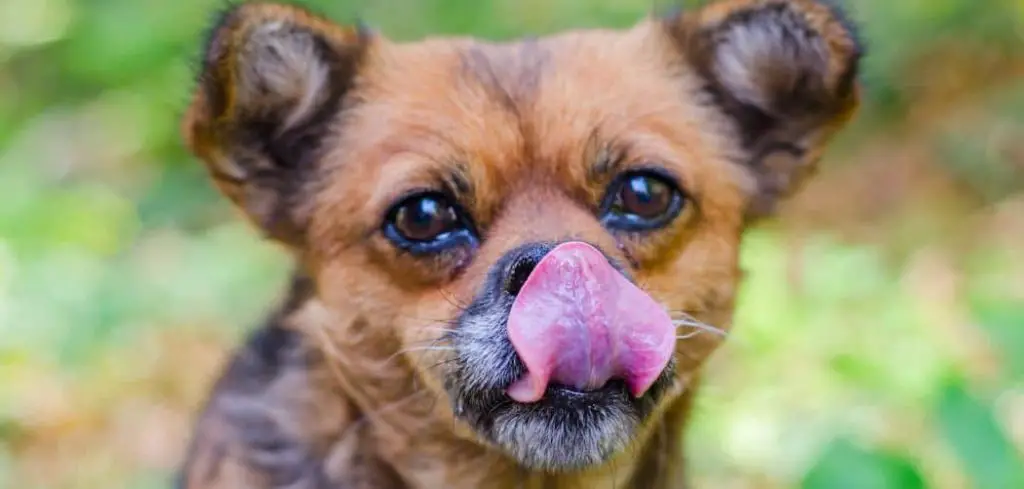Panting is a normal way for dogs to cool themselves, however persistent panting accompanied by howling may suggest underlying medical conditions.
We outline the common reasons for dog panting and howling, what you can do at home, and when to seek veterinary help.
Dog Panting and Howling — Why It Happens
When a dog is panting and howling, it’s often a sign of distress, anxiety, or discomfort. Panting indicates physical or emotional stress, while howling is a vocal expression of communication or unease. Dogs may pant and howl together when they’re experiencing pain, fear, separation anxiety, or confusion—especially at night or when left alone.
In some cases, these behaviors can also occur with cognitive decline in older dogs or as a reaction to certain medications. Environmental factors, like loud noises or changes in routine, may also trigger this combination.

Dog Panting and Howling: Common Causes
Anxiety or Stress
Anxiety is one of the most common reasons dogs pant and howl simultaneously.
Dogs experiencing separation anxiety, fear of loud noises, or changes in their environment may display rapid panting and vocalizations.
Additional signs include pacing, drooling, trembling, or hiding. While temporary anxiety can be managed at home, chronic stress can affect overall health and should be addressed with behavioral strategies or veterinary guidance.
Read more: Dog Panting and Hacking (Could it be serious?)
Pain or Discomfort
Pain from injuries, arthritis, dental issues, or internal conditions can trigger panting and howling.
Dogs may show reluctance to move, restlessness, or whimpering in addition to vocalizing.
Panting can increase due to stress on the body, while howling communicates discomfort.
Identifying the source of pain and consulting a veterinarian ensures proper treatment and relief for your dog.
Heat or Environmental Stress
Overheating or heatstroke may cause dogs to pant heavily and vocalize distress through howling.
Increased body temperature triggers panting as a cooling mechanism, and howling may signal discomfort.
Signs to watch for include drooling, red gums, rapid heart rate, or collapse. Immediate cooling measures and veterinary care are crucial in severe cases to prevent organ damage.
Respiratory or Heart Issues
Respiratory infections, asthma, or heart disease can cause panting and howling due to difficulty breathing or circulation issues.
Symptoms may include coughing, wheezing, exercise intolerance, and pale or bluish gums.
Dogs experiencing cardiovascular or respiratory distress require prompt veterinary evaluation to prevent complications and ensure proper treatment.
Cognitive or Neurological Disorders
Cognitive dysfunction in older dogs, seizures, or other neurological conditions can manifest as panting accompanied by howling.
These dogs may appear disoriented, restless, or anxious, often at night or during routine changes.
Neurological issues can affect quality of life, making veterinary assessment essential for diagnosis and management.
Painful or Irritating Medical Conditions
Conditions like ear infections, gastrointestinal discomfort, or fever can provoke both panting and vocalizations.
Dogs may show scratching, licking, or restlessness, indicating localized irritation or systemic discomfort.
Identifying and treating the underlying medical issue promptly is critical to prevent worsening symptoms and prolonged distress.
Read more: Dog Panting and Growling (Here’s why)
What to Do If Your Dog Is Panting and Howling
Observe your dog’s behavior carefully to identify patterns and triggers for panting and howling. Note the frequency, duration, and any environmental or emotional factors.
Provide a calm and secure environment, ensuring access to water and a comfortable resting area. Minimizing exposure to stressors, loud noises, or extreme temperatures can reduce these behaviors.
For pain or medical concerns, watch for signs like limping, whining, drooling, vomiting, or reluctance to move. Contact your veterinarian promptly to determine the cause and appropriate treatment.
Use positive reinforcement and consistent routines to help manage anxiety-related panting and howling. Simple training techniques, mental stimulation, and environmental enrichment can alleviate stress in dogs prone to anxiety.
Keep a record of your dog’s panting, vocalizations, and other behaviors. Sharing this information with your veterinarian can help identify underlying causes more efficiently and guide treatment or behavioral interventions.
When to Call or Visit Your Vet
Immediate veterinary attention is necessary if panting and howling is accompanied by collapse, severe lethargy, vomiting, pale or blue gums, labored breathing, or unresponsiveness.
Even mild but persistent symptoms warrant veterinary evaluation to rule out heatstroke, infection, heart or respiratory conditions, pain, or neurological disorders. Early intervention can prevent complications and improve your dog’s quality of life.
Older dogs or those with pre-existing health issues should be monitored closely, as they may be more vulnerable to complications from stress, pain, or illness. Prompt veterinary care is essential in safeguarding their health.
Read more: Dog Panting and Grunting (Here’s why)
Key Takeaway
Panting and howling in dogs can result from anxiety, pain, heat, infections, heart or respiratory problems, or neurological issues.
While occasional panting and vocalizations may be normal, persistent or unexplained occurrences should be carefully monitored.
Providing a safe and calm environment, tracking symptoms, ensuring hydration, and seeking veterinary care when necessary are key steps in keeping your dog healthy.
Early intervention can relieve distress, prevent complications, and support your dog’s overall well-being.
